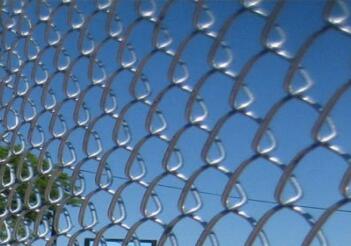Understanding Cutting and Perforated Metal Sheets
In the realm of manufacturing and design, metal sheets have become a staple material due to their strength, versatility, and aesthetic appeal. Among these, perforated metal sheets stand out for their unique combination of functionality and style. When discussing perforated metal sheets, it is essential to understand the cutting process involved in their production, which affects not only the sheet's performance but also its application in various industries.
What is Perforated Metal?
Perforated metal sheets are metal panels that have been stamped or punched with a series of holes to create a pattern. These patterns can vary in size, shape, and spacing, allowing for a wide range of designs. The primary purpose of perforation is to enhance the material's capabilities, such as allowing for air or light passage while maintaining structural integrity. Common materials used for perforated sheets include stainless steel, aluminum, and mild steel, each chosen based on the desired properties for specific applications.
The Cutting Process
Cutting perforated metal sheets involves several techniques, with the choice of method largely dependent on the thickness of the sheet, the intricacy of the design, and the volume of production needed
. Common cutting methods include1. Laser Cutting This technique uses a high-powered laser to cut through metal with exceptional precision. Laser cutting is ideal for intricate designs and can produce clean edges, making it a popular choice for custom perforated metal sheets. Additionally, it minimizes material waste, enhancing cost-effectiveness.
2. Waterjet Cutting Using a high-pressure stream of water mixed with abrasives, waterjet cutting can handle thicker materials without affecting their structural integrity. This method is particularly useful for delicate designs that require a smooth finish and for materials that may be affected by heat generated in other cutting processes.
cutting perforated metal sheet

3. Punching In this traditional method, a cutting die is used to punch holes into the metal sheet. Punching is a cost-effective option for large-scale production where uniformity and speed are required. It can create a variety of hole shapes and sizes but may not achieve the same level of detail as laser or waterjet cutting.
4. Shearing This method is typically used for cutting larger sheets into more manageable sizes before further processing. Although shearing itself does not create perforations, it plays a crucial role in shaping the initial metal sheet.
Applications of Perforated Metal Sheets
The applications of perforated metal sheets are numerous, spanning various industries. They are commonly used in construction for decorative facades, sunshades, and noise reduction barriers. In the architectural field, perforated metals are favored for their aesthetic qualities, providing an appealing visual element while allowing for airflow and light.
In industrial settings, perforated sheets serve functional roles such as filters in ventilation systems, screens in machinery, and protective guards. They are also prevalent in the transportation industry, used in car parts, airplane structures, and public transportation design.
The Future of Perforated Metal Sheets
As technology advances, so too do the possibilities for perforated metal sheets. The integration of digital design software allows for more intricate and customized designs that can be easily translated into production. Moreover, trends toward sustainable materials have led manufacturers to explore eco-friendly options for perforated sheets, ensuring that they meet the rising demand for environmentally responsible products.
In conclusion, understanding the cutting processes of perforated metal sheets is essential for leveraging their advantages across various applications. Whether for artistic expression in architecture or functional use in machinery, the importance of precise cutting and quality design cannot be overstated. As industries continue to evolve, so will the innovations surrounding perforated metal sheets, solidifying their place in modern manufacturing and design.

















